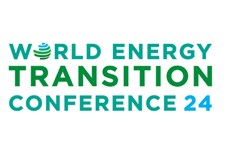Methanol plants increasing natural gas consumption
Published by Callum O'Reilly,
Senior Editor
Hydrocarbon Engineering,
The US Energy Information Administration (EIA) has reported that new methanol plants under development in the US are increasing natural gas consumption in the industrial sector.
Three new plants expected to come online in 2019 and 2020 have a combined nameplate capacity of approximately 3.3 million tpy and would increase total US methanol capacity to 9.4 million tpy - a 45% increase from the current US capacity.
Methanol has several energy-related applications. Pure methanol can be used directly as an alternative transportation fuel (China, in particular, uses methanol this way) or blended into motor gasoline abroad to increase combustion efficiency and reduce air pollution. EIA forecasts that new methanol projects will help drive growth in industrial natural gas demand through 2020. Total US industrial natural gas consumption is expected to average 23.1 billion ft3/d in 2019 and 23.4 billion ft3/d in 2020, up from 22.6 billion ft3/d in 2018.
Most methanol plants are located in the Gulf Coast region. Existing pipeline infrastructure in the region will allow increasing natural gas production from the Permian Basin in western Texas and eastern New Mexico to reach methanol production facilities along the Gulf Coast. Proximity to the Gulf Coast allows many of these plants to export methanol to China.
Relatively low natural gas prices in recent years have provided incentives to develop new methanol facilities. Natural gas prices in the Permian region have been especially low relative to the Henry Hub national benchmark. In 2018, the discount to the Henry Hub averaged 37%, with Permian prices averaging US$1.98/million Btu, compared with Henry Hub prices of US$3.15/million Btu. Permian region natural gas production has increased, helping reduce feedstock and process heat costs for these facilities.
One new methanol plant, the 5000 tpd Natgasoline methanol plant in Beaumont, Texas, began operating in June 2018. According to the operating companies (OCI N.V. Consolidated Energy Ltd and Natgasoline LLC), the plant has consistently been running above its nameplate capacity. The new plant is the largest methanol production facility in the country, consuming an estimated 0.15 billion ft3/d of natural gas.
During 2019 and 2020, two new methanol plants on the Gulf Coast are expected to begin operating. Big Lake 1, owned by GX2 Energy and Methanol Holdings, Trinidad, is expected to enter service during 3Q19 in Louisiana. The Big Lake facility will convert dry natural gas into about 3800 tpd of methanol, which may then be converted to motor gasoline.
In addition, the Yuhuang’s St. James 1 methanol plant, with a capacity of 4700 tpd, is expected to start operating in mid-2020 and would be the second-largest methanol facility in the US. Phase two, which is currently under consideration, could double its capacity, which would make it the largest methanol production facility in the US.
In addition to these Gulf Coast methanol plants, Liberty One in West Virginia is expected to produce about 550 tpd of methanol when it comes online in 2019. Liberty One is a much smaller methanol-producing facility that is relocating from Rio De Janeiro, Brazil. Liberty One’s proximity to the Appalachia Basin ensures natural gas feedstock at a relatively low cost to the plant.
Read the article online at: https://www.hydrocarbonengineering.com/gas-processing/25022019/methanol-plants-increasing-natural-gas-consumption/
You might also like
Viridi Energy signs 20-year agreement with Énergir
Viridi Energy, a renewable natural gas (RNG) platform, has signed a 20-year offtake agreement with Énergir, L.P.


